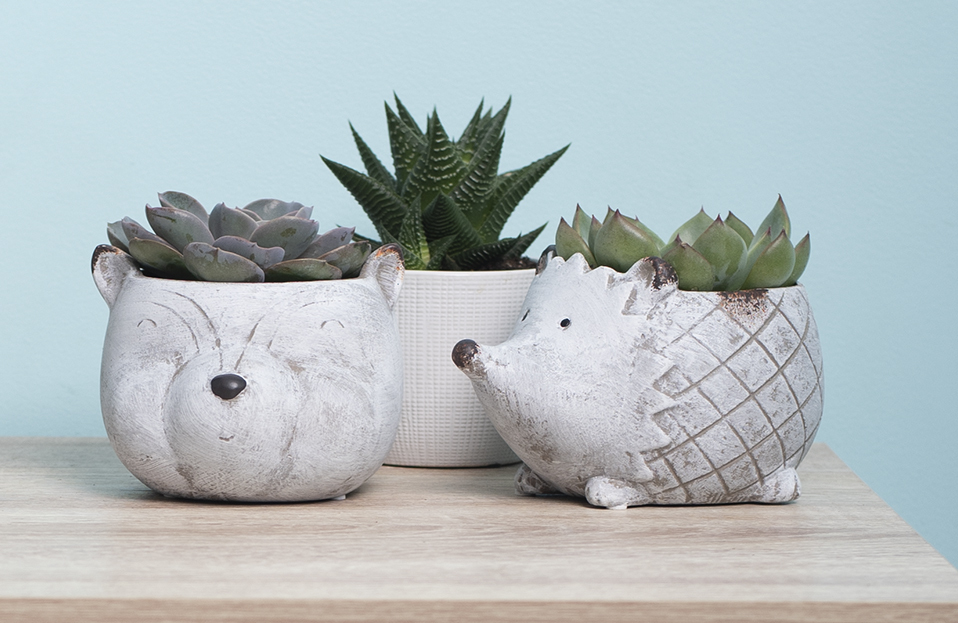

Succulents are prized for being incredibly easy to care for and virtually thriving on neglect. However, like all other houseplants they are susceptible to common problems.
Read below for answers to some of the most common issues you may experience as a new plant parent.
When succulents get lanky and their stem stretches out with gaps between the leaves, it’s a sign that it may not getting enough sunlight. You can help prevent this by moving your succulent to a brighter spot in your home, or by using artificial indoor grow lights.
If you start to notice the leaves of your succulent turning yellow or lighter in colour around the centre, it could be a sign that it has been over-watered. Succulents naturally store water in their leaves, which helps protect them during periods of drought.
When they receive too much water or their roots are kept wet for an extended period of time, it can cause root rot, which is one of the number one reasons why succulents die. A tell-tale sign of root rot is that leaves and roots become soft and mushy. Once root rot has set in it can be nearly impossible to nurse your succulent back to health, so oftentimes it is better to let your plant get too dry than love it to death.
Brown leaves on a succulent can mean several things. Succulents that are mostly green but have some dry, brittle leaves underneath are generally healthy. The old/dried leaves can be removed with a sterile knife or scissors to make room for new growth.
Brown tips on leaves that are otherwise green and firm could be a sign of sunburn, or of water impurities. Tap water can contain additives like chlorine and fluoride that are great for teeth, but not for plants. Filtered water that still contains some salts and minerals is optimal for plant health.
Leaves that are mostly green and fleshy but have patches of brown on top could be a sign of sunburn. Sunburn is most likely to occur if a plant is exposed to direct or full sunlight after being indoors or in the shade for quite some time. Sunburn can be prevented by slowly acclimating your succulent to increased amounts of sunlight over a period of weeks.
Like all other plants, succulents are susceptible to damage from pests and insects. Pests can migrate from plant to plant, so it’s a good idea to quarantine any new plants you bring home for a couple of weeks and separate any infected plants away from any other healthy plants nearby. Some of the most common pests that invade houseplants are aphids, spider mites, scale, gnats, mealy bugs, thrips, whitefly, and ants.
What treatment method you use will depend on the type of pest and the level of infestation. Neem oil and insecticidal soap that is formulated for indoor use are common treatments for a variety of houseplant pests. A diluted mixture of isopropyl alcohol and water can sometimes be used as a topical spray or dabbed with a cotton swab to help remove soft-bodied insects, but be careful using it, as it can damage sensitive plant leaves.
Propagate it! It is not uncommon for succulents to occasionally drop a leaf. Once the “wound” where the leaf broke off dries and callouses over, you may notice after a short while that tiny roots will start to form within a few weeks.
The leaf will begin to wither as it becomes food for new growth. Once roots form, you can plant the cutting in a well-draining sandy soil formulated for succulents, or potting soil that has been mixed with sand and perlite. Wait a day, then water.
Happy planting!